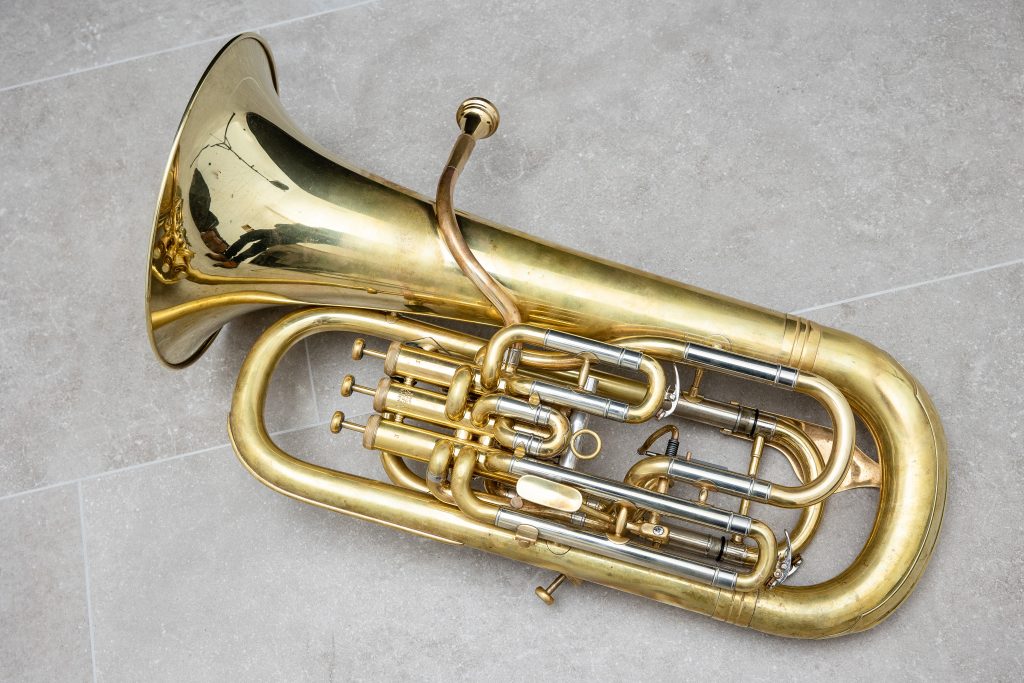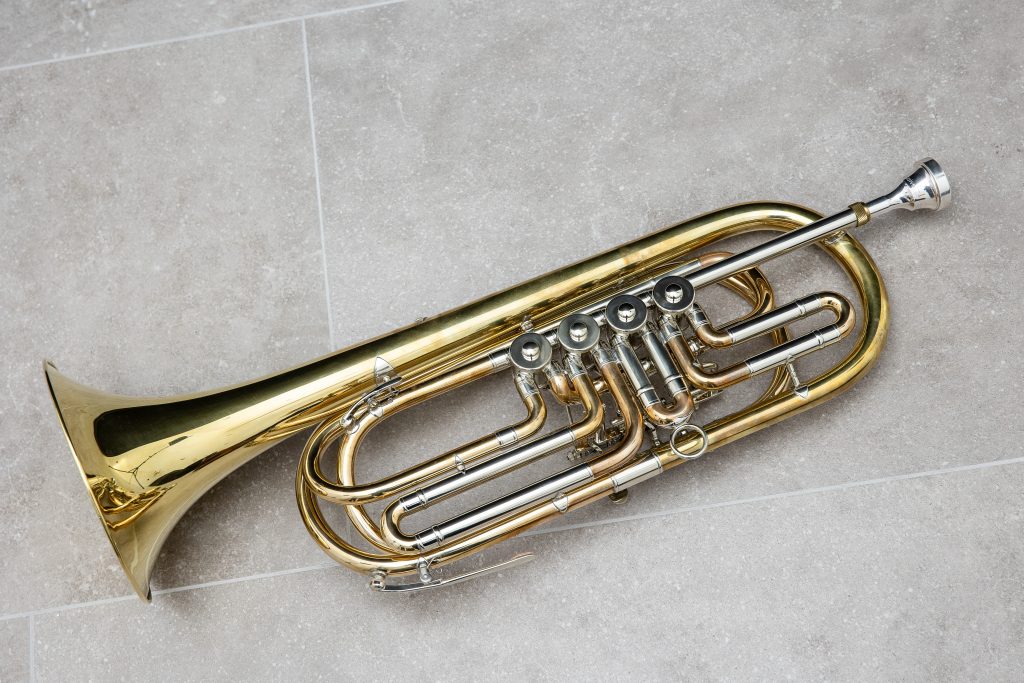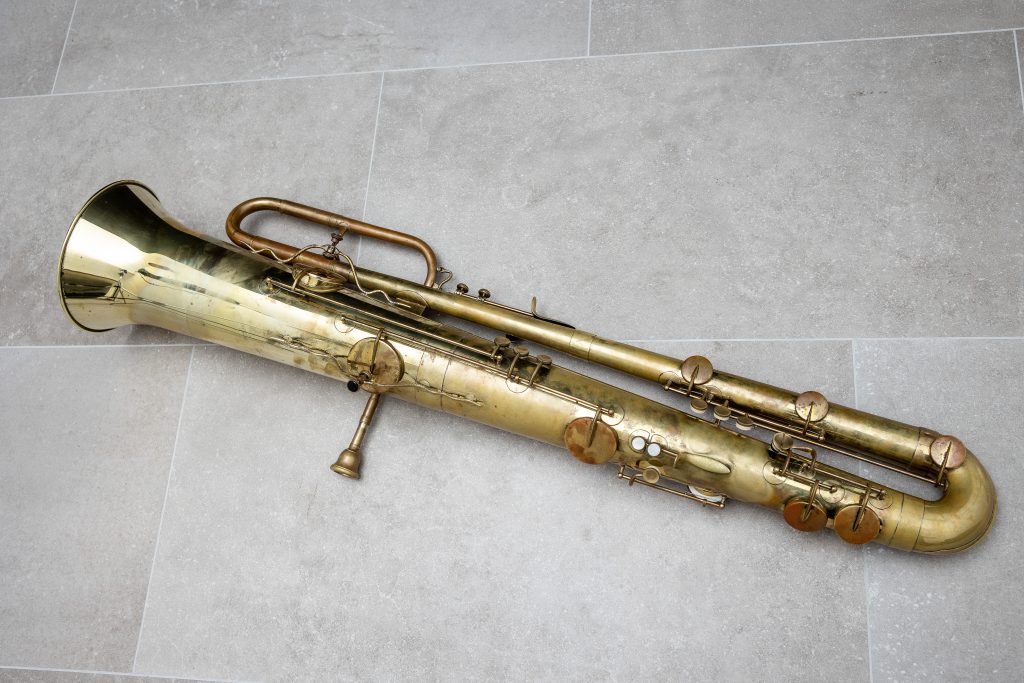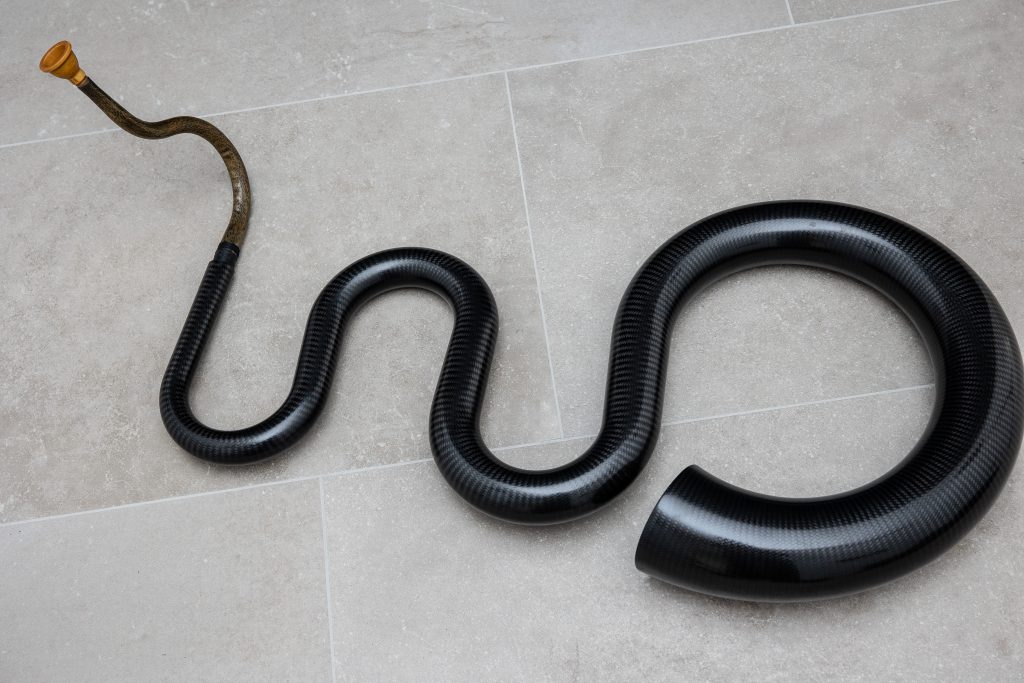Klemens Vetter
Instruments
Euphonium
as a solo instrument or in addition to the tuba in the following orchestral works, among others:
- Gustav Holst, The Planets
- Richard Strauss, Ein Heldenleben
- Richard Strauss, Don Quixote
- Leoš Janáček, Sinfonietta (baritone/tenor horn in German style)
- Gustav Mahler, Symphony No. 7 (baritone/tenor horn in German style)
- Dmitri Shostakovich, Lady Macbeth of Mtsensk
The terms tenor tuba, tenor horn, baritone, saxhorn bass, flicorno basso are also often used in scores.
My euphonium was developed and produced in the Geser-Instruments manufactory in Leutkirch in the Allgäu.
More information here:
Basstrumpet
This instrument is used in many classical pieces such as Elektra (opera) and Macbeth (tone poem) by Richard Strauss, Le sacre du printemps (ballet) by Igor Stravinsky, the Ring der Nibelungen (opera) by Richard Wagner and Le Grand Macabre (opera) by György Ligeti.
More information here:
Ophicleide and Serpent
The ophicleide was developed in France around 1820 and was intended to reinforce the bass voice in the new, ever-growing orchestras. The contrabassoon and bass clarinet were too quiet for this and the serpent, which had been played since the end of the 16th century, could not do justice to the new sound.
For this reason, the serpent (French: snake) became the ophicleide (Greek: keyed snake). The serpent is traditionally made of wood and leather and has six or seven holes.
Today, the serpent is mainly used in chamber music ensembles for early music, but has also occasionally found its way into jazz and improvisation. Well-known original pieces for the serpent include Mendelssohn’s oratorio Paulus, Wagner’s Rienzi and the first edition of Berlioz’s Symphonie Fantastique.
The ophicleide was used in Italian music by Bellini and Rossini at the beginning of the Romantic period and later in Mendelssohn’s oratorio Elijah and A Midsummer Night’s Dream, Berlioz’s Requiem and the famous Symphonie Fantastique, Wagner’s Rienzi and the Flying Dutchman. The ophicleide has also found its way into contemporary music with “Das Floß der Medusa” by H.W. Henze.
More information here:



